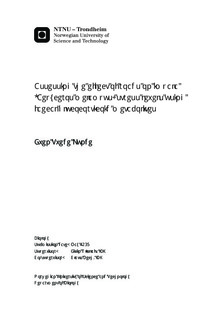Assessing the effect of roads on impala (Aepyceros melampus) stress levels using faecal glucocorticoid metabolites
Master thesis
Permanent lenke
http://hdl.handle.net/11250/245232Utgivelsesdato
2013Metadata
Vis full innførselSamlinger
- Institutt for biologi [2575]
Sammendrag
Loss of habitat is the main cause of species extinction, which today is 100 - 1000 times faster than the background extinction rate before the presence of mankind. One cause is that natural areas are being increasingly perturbed by roads, which degrades and fragments the habitat. In Tanzania, a proposed road through the Serengeti National Park (SNP) has caused international debate on whether it will cause irreversible damage to the ecosystem. I have assessed the current effect of roads and traffic on wildlife in the Serengeti, by using the impala (Aepyceros melampus) as a model species. I measured how faecal glucocorticoid metabolites (FGM), an indicator of stress levels, were affected by different road categories with different levels of traffic. Other stress related variables such as distance to the road, vegetation type and group size were accounted for. 196 faecal samples from 165 groups were collected over a 2 month-period from June August 2012. FGM were measured using an enzyme immunoassay (EIA) validated for ruminants. I found that FGM levels were significantly increased near major roads with elevated levels of traffic compared to minor roads and side roads with less traffic in the Serengeti ecosystem. Predators, illegal hunting and social stress might also affect FGM levels in the impala, but these variables could not explain the variation observed. These results show for the first time that a large African mammal exhibit significant physiological stress in relation to roads. I argue that roads and traffic have the potential to cause major physiological stress in mammals, which in turn can affect the fitness of the organism. Care must be taken before implementing roads in protected areas, as increased disturbance can have severe consequences for the ecosystem if keystone species are affected. Future studies should assess the levels of stress wildlife can tolerate without it affecting fitness. Management plans for natural areas should include the possibility for increased physiological stress in animals living near major infrastructures and be proactive to ensure population and ecosystem viability.
